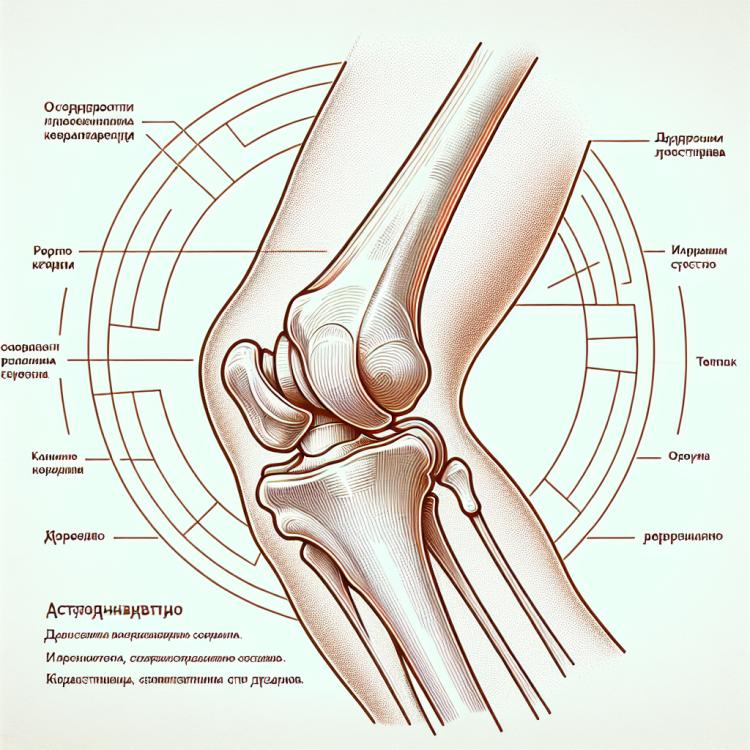
Osteoarthritis of the elbow joint: causes, symptoms, and effective treatment methods
- Understanding the essence: what is elbow joint osteoarthritis
- Causes of problems: why does elbow joint osteoarthritis occur
- Signals of the problem: what symptoms indicate elbow joint osteoarthritis
- Professional Perspective: Treatment of Elbow Joint Osteoarthritis Through the Lens of Medical Expert Opinion
- Legacy of the future: learn about the diagnosis of elbow joint osteoarthritis
- Restoration and relief: treatment methods for elbow joint osteoarthritis
- Joint care: how to prevent the development of elbow joint osteoarthritis
- Beyond the Ordinary: Amazing Facts About Elbow Joint Osteoarthritis
- FAQ
Understanding the essence: what is elbow joint osteoarthritis
Elbow joint osteoarthritis is a degenerative disease characterized by the destruction of cartilage tissue in the joint. With elbow osteoarthritis, pain, limited movement, and swelling in the elbow area occur. This condition often arises due to joint overload, injury, or aging, leading to the gradual wear of cartilage and the emergence of degenerative changes in the joint.
Causes of problems: why does elbow joint osteoarthritis occur
Osteoarthritis of the elbow joint, like other forms of arthritis, is most often associated with the wear of cartilage tissue caused by overloads or injuries. Possible causes include injuries, repetitive mechanical stress on the joint, circulatory disorders, and age-related changes. Additionally, genetic predisposition, obesity, and metabolic disorders can also contribute to the development of osteoarthritis of the elbow joint.
- Injuries: Damage to the elbow joint, including dislocations, fractures, or other injuries, can affect the structure of the joint tissue.
- Repeated mechanical loads: Excessive strain on the joint caused by repetitive movements or professional activities can contribute to the development of elbow osteoarthritis.
- Metabolic disorders: Some metabolic disorders, such as hyperparathyroidism or diabetes, can increase the risk of developing osteoarthritis.
- Genetic predisposition: Hereditary factors may play a role in the development of elbow osteoarthritis.
- Obesity: Excess weight puts additional pressure on the joints, increasing the likelihood of developing elbow osteoarthritis.
Signals of the problem: what symptoms indicate elbow joint osteoarthritis
Symptoms of elbow osteoarthritis can manifest in various ways, including pain, swelling, limited mobility, and creaking during movement. Pain in the elbow can be acute or chronic, occurring during physical exertion or at rest. Swelling and inflammation may be noticeable, and sensations of creaking or cracking during joint movement may also occur, all of which can be signs of elbow osteoarthritis.
- Elbow pain: acute or chronic pain that worsens with physical exertion or at rest.
- Swelling and inflammation: visible swelling of the joint accompanied by inflammation of the tissues and skin around the joint.
- Limited mobility: difficulty in extending or bending the elbow, feeling of the joint surfaces catching.
- Grinding and cracking during movement: possible sound effects in the joint during bending or straightening, indicating wear of the cartilage tissue.
- Weakness in the arm: possible sensations of weakness in the arm associated with insufficient functionality of the elbow joint.
Professional Perspective: Treatment of Elbow Joint Osteoarthritis Through the Lens of Medical Expert Opinion
Experts in the field of medicine agree that the treatment of elbow joint osteoarthritis should be comprehensive and individually tailored for each patient. The main methods include physiotherapy, medication therapy, exercises to strengthen the muscles around the joint, and sometimes surgical intervention. Experts emphasize the importance of timely assistance, regularity of treatment, and adherence to specialists’ recommendations to achieve effective results in the fight against elbow joint osteoarthritis.

Legacy of the future: learn about the diagnosis of elbow joint osteoarthritis
The diagnosis of elbow joint osteoarthritis usually includes a clinical examination of the joints, discussion of medical histories, and conducting examinations such as X-rays or magnetic resonance imaging. These methods can help visualize changes in the structure of the joint and assess the extent of cartilage damage. Additionally, further laboratory tests and analyses may be performed to rule out other conditions that mimic the symptoms of elbow joint osteoarthritis.
- Clinical examination: the doctor examines the joint and checks its mobility.
- Medical history: discussion of past injuries, illnesses, and symptoms related to the joint.
- X-ray: X-ray images allow us to see structural changes in the joint.
- Magnetic resonance imaging (MRI): a more detailed image of the structure of the joints and tissues.
- Laboratory tests: conducting blood tests to identify inflammatory processes and rule out other possible causes of symptoms.
Restoration and relief: treatment methods for elbow joint osteoarthritis
- Pharmacological treatment: The use of anti-inflammatory drugs, painkillers, or injections of glucocorticosteroids to reduce pain and inflammation.
- Physical therapy: Includes therapeutic massage, exercises to strengthen muscles and restore joint mobility, as well as the use of physiotherapy procedures such as ultrasound or laser therapy.
- Surgerical intervention: An operation may be performed, including arthroscopy to remove damaged tissues or joint replacement.
- Adaptive aids: The use of supportive braces, orthoses, or other special devices to alleviate pressure on the joint and ensure the correct position during movement.
- Adherence to recommendations and rehabilitation: It is important to follow an individual treatment plan, including physical activity regimes, weight control, and regular rehabilitation plans to achieve maximum recovery of joint functions.
Joint care: how to prevent the development of elbow joint osteoarthritis
- Regular physical exercise: Strengthening muscles and maintaining joint flexibility will help prevent wear and tear on the cartilage in the elbow joint.
- Maintaining a healthy weight: Excess weight negatively impacts the joints, so weight control can reduce stress on the elbow joint.
- Moderate loads on the joints: Avoiding excessive loads and impacts on the elbow joint will help prevent its wear and damage.
- Proper nutrition: A diet rich in vitamins C and D, calcium, magnesium, and other nutrients contributes to joint health.
- Avoiding injuries and overloads: Using the correct technique during physical activities and protecting the joints from injuries will help maintain their health and flexibility.